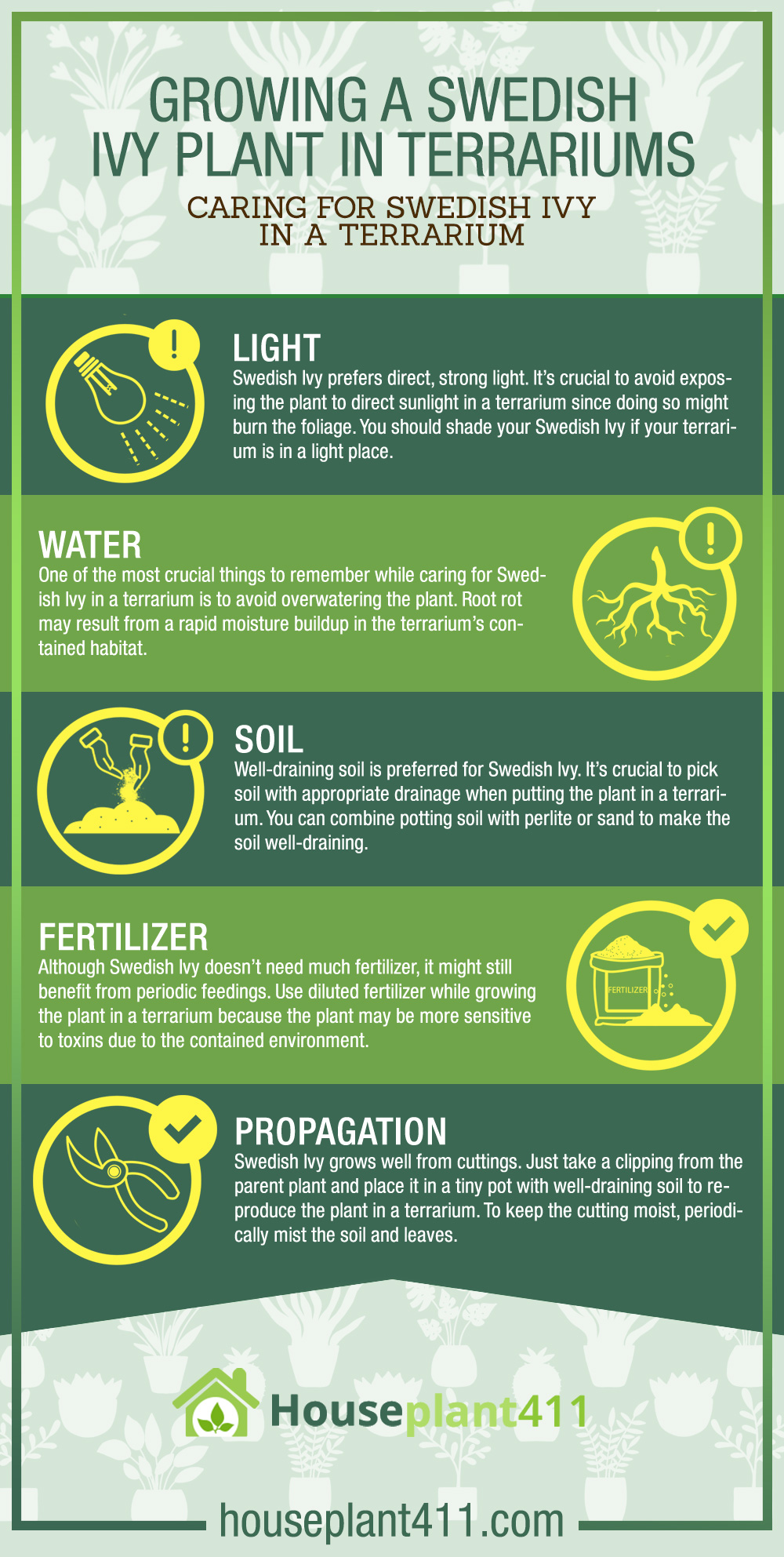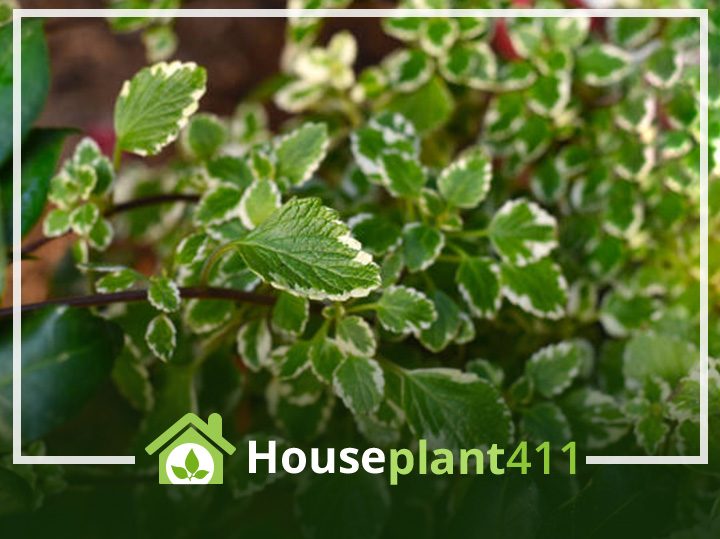Plectranthus australis, often known as Swedish Ivy, is a common indoor plant that offers a dash of greenery to almost any living area and is simple to care for. Swedish Ivy may flourish in several settings, but one of the most interesting places to grow it is in a terrarium. This article will examine the advantages of growing a Swedish Ivy plant in terrariums and advise on how to take care of this lovely plant.
What Are Terrariums?
Little, confined ecosystems called terrariums are frequently used to cultivate plants or make tiny gardens. These are often built from materials such as plastic or glass containers, including jars, bottles, or bowls, and are intended to resemble the circumstances present in a natural setting, like a rainforest or a desert.
As they can cultivate various plants, including succulents, mosses, ferns, and even carnivorous plants, terrariums are a popular way to add a touch of nature to your home or office. They are particularly excellent for those with limited space or urban residents for whom outdoor gardening might not be an option.
Terrariums come in two basic varieties: open and closed. Compared to closed terrariums, which are totally sealed to provide a self-sustaining habitat, open terrariums permit airflow between the inside and exterior of the container.
Closed terrariums are good for plants that flourish in wet settings, such as ferns and mosses. In contrast, open terrariums often cultivate species that demand more air circulation, like cacti and succulents. As the plants and soil inside the container recycle water and nutrients to create a self-sustaining environment, closed terrariums are also perfect for building a miniature ecosystem that requires very little upkeep.
Swedish Ivy Plant in Terrariums
Both closed and open terrariums may support Swedish Ivy’s growth. However, closed terrariums are typically favored since they produce a more humid and self-sustaining environment suitable for this plant.
The confined setting of a closed terrarium might aid in maintaining moisture levels surrounding the plant. Swedish Ivy thrives in damp environments. A closed terrarium can also aid in preventing the drying out of Swedish Ivy leaves, another issue that can occur if exposed to dry air.
It’s crucial to remember that Swedish Ivy may also thrive in open terrariums as long as the humidity and moisture levels are appropriately managed. With an open terrarium, it’s crucial to maintain the soil moist but not excessively so and to situate the plant in an environment with moderate to high humidity.
Ultimately, your personal preferences and the environmental factors in your house will determine whether you keep Swedish Ivy in an open or closed terrarium. A closed terrarium can be a better option if you live in a dry region or have problems regulating humidity levels. An open terrarium can function just as well if you’ve had success growing plants and are confident in your capacity to keep the right moisture levels.
Benefits of Growing Swedish Ivy in a Terrarium
Growing Swedish Ivy in a terrarium has several advantages.
The main purpose of terrariums is to provide plants with a regulated environment to flourish. Swedish Ivy thrives in a humid environment created by the confined space’s ability to hold moisture. Considering that Swedish Ivy is native to tropical and subtropical areas and likes high humidity levels, this is the case.
Growing Swedish Ivy in a terrarium has another advantage: it helps clean the air. Studies have revealed that plants can assist in eliminating hazardous contaminants from the air since they are natural air filters. Swedish Ivy may be grown in a terrarium to produce a miniature environment that purifies the air in your house.
Moreover, terrariums are a fantastic way to bring nature into your home. Pick one that complements your décor, as terrariums are available in various sizes and forms. They are also low-maintenance, making them a great option for individuals who want houseplants but don’t have time for their upkeep.
Caring for Swedish Ivy in a Terrarium
After discussing the advantages of growing Swedish Ivy in a terrarium, let’s move on to how to take care of this plant there.
Light
Swedish Ivy prefers direct, strong light. It’s crucial to avoid exposing the plant to direct sunlight in a terrarium since doing so might burn the foliage. You should shade your Swedish Ivy if your terrarium is in a light place.
Water
One of the most crucial things to remember while caring for Swedish Ivy in a terrarium is to avoid overwatering the plant. Root rot may result from a rapid moisture buildup in the terrarium’s contained habitat. Before rewatering, giving the soil a little time to dry out is crucial.
Just sprinkle the leaves and soil of your Swedish Ivy in the terrarium with a spray bottle to hydrate it. You may use a watering can with a slender spout for direct soil irrigation. The plant has to be watered sparingly because over-watering might cause issues.
Soil
Well-draining soil is preferred for Swedish Ivy. It’s crucial to pick soil with appropriate drainage when putting the plant in a terrarium. You can combine potting soil with perlite or sand to make the soil well-draining.
Fertilizer
Although Swedish Ivy doesn’t need much fertilizer, it might still benefit from periodic feedings. Use diluted fertilizer while growing the plant in a terrarium because the plant may be more sensitive to toxins due to the contained environment.
Propagation
Swedish Ivy grows well from cuttings. Just take a clipping from the parent plant and place it in a tiny pot with well-draining soil to reproduce the plant in a terrarium. To keep the cutting moist, periodically mist the soil and leaves. The cutting will eventually form roots and become a new plant.

Potential Problems With Growing Swedish Ivy Plants in Terrariums
Although Swedish Ivy is often simple to maintain, growing it in a terrarium might have some challenges.
The most prevalent issue is overwatering. As was already said, avoiding overwatering terrarium plants is crucial because doing so might result in root rot. Between waterings, make careful to let the soil somewhat dry out.
Pests are yet another possible issue. Mealybugs and spider mites are two common pests that can harm Swedish Ivy. Maintaining the plant’s health and cleanliness is essential to avoid bug infestations. You may also utilize natural pest control techniques like neem oil or insecticidal soap to keep pests at bay.
Finally, monitoring the Swedish ivy plant’s growth in your terrarium is critical. The plant may overrun its container and suffer if it grows too big. Regular plant trimming is important, as is transplanting it into a bigger pot if required.
Wrapping Up!
Swedish Ivy is a lovely, low-maintenance plant that may flourish in various settings. It can develop a special, self-sustaining environment in a terrarium, aiding indoor air filtration. The beauty of Swedish Ivy in a terrarium may be appreciated for many years with the right care and attention to light, water, soil, fertilizer, and growth.
Consider planting Swedish Ivy in a terrarium if you’re searching for a method to bring a little bit of nature into your house or business. It’s a fantastic option for seasoned and inexperienced plant enthusiasts due to its rich, green leaves and simple maintenance requirements. Just keep in mind to provide your Swedish Ivy with the necessary care so that it may flourish, and you’ll be rewarded with a gorgeous, healthy plant that will add color to any area.

